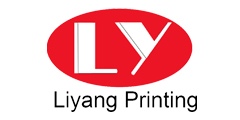◆ Sterile paper packaging
Packaged beverage boxes are divided into refrigerated (roof packs) and room temperature (sterile packs). The shape of a refrigerated beverage box is usually roof-shaped, mainly composed of cardboard and polyethylene, and requires a good cold chain in the distribution process. Due to the presence of a wet strength agent, it is difficult to disintegrate in the hydraulic pulping process. , need to add specific chemicals.
Packaging This article describes the normal temperature liquid sterile paper packaging. Normal temperature sterile paper packaging is usually brick-shaped, ie, a beverage package that is common in the market and requires no refrigeration. Since most of these beverage boxes are provided by Tetra Pak, people call it Tetra brick aseptic (TBA), which is collectively referred to as sterile paper packaging in terms of performance.
Packaging sterile paper packaging consists of cardboard, plastic and aluminum film composite, paper accounted for 73%, plastic 20%, aluminum 5%, other printing inks and coatings accounted for 2%. The paperboard is made of long and short fibers; in order to increase the thickness and stiffness, some chemical thermomechanical pulp (CTMP) is usually added to the paperboard; in order to make the paperboard surface smooth and easy to print, there is a thin coating on the outside of the paperboard.
The reuse of packaged aseptic paper packaging has more than ten years of experience abroad, and the ratio of recycling and recycling has increased year by year. In the European market, the amount collected in 2000 was 200,000 tons. In the first ten months of 2005, the company recovered about 8,000 tons of pulp from aseptic paper packaging. After the sterile paper packaging is recycled, it can be used in the production of wrapping paper, envelope paper, corrugated paper, fruit bagging paper and other products.
◆ Composition
Packaging, usually aseptic paper packaging consists of 6 layers, from the outside to the inside: the first layer is polyethylene, which blocks moisture and bacteria; the second layer is cardboard, which maintains the strength and toughness of the packaging material; It is polyethylene, which adheres to all layers; the fourth layer is aluminum foil, which blocks oxygen, odor and light; the fifth layer is polyethylene, which adheres to all layers; and the sixth layer is polyethylene, which seals beverage foods.
◆ Break solution
Packaging Because cardboard and plastic in sterile paper packaging are thermally bonded, there are no other binders, so during the hydraulic pulping process, the paper and plastic are disengaged as the mechanical force from the rotation of the rotor creates a fiber. , plastics, aluminum plastic materials. What needs to be explained here is that since aluminum and plastics have strong adhesion, they cannot be separated during the hydraulic pulping process. However, this aluminum-plastic material can vaporize plastics and liquefied aluminum by plasma technology to achieve separation of aluminum and plastic. Packaging Generally, the pulp in a sterile paper package can be either continuous or intermittent; either a high consistency pulper or a low consistency pulper can be used. It is generally believed that the use of a high consistency pulper is better for composite paperboard. There is basically no difference between the high-consistency pulping process and traditional OCC pulping. Generally: concentration of 12% to 15%, temperature 25 ~ 50 °C, pulping time 20min, pH 7 ~ 9, usually do not need to add chemicals.
The packaging confirmed through experiments that the Tetra Pak can be disintegrated in a short time. When the repulping time exceeds 10 min, the content of fiber debris is very small; when the input energy is 20 kWh/t, more than 95% of the raw material is Break solution.
As can be seen in the package, the number of dust on the paper (Dirt-Count) is less than 7 ppm after rough screening, fine screening, reverse slag removal and forward slag removal. The slag removal rate during the screening phase depends on the cleanliness of the raw materials. According to the experience of the existing plant, the slag discharge rate is less than 10%. After the screening, the freeness of the ready pulp was 430C.SF. After 15 minutes of beating treatment, the freeness was 257C.SF, and the breaking length increased by more than 20% to 6.59 km. The bursting index also increased to a certain extent, and the tearing index had Slightly lower.
Packaging Increases the quality of the OCC waste pulp when it is reused in combination with waste paper OCC. If the total amount of raw materials is less than 5%, the original process and equipment do not need to be adjusted; if it exceeds 5%, the sieve residue after the hydraulic pulping needs to be treated with a trommel, because OCC The screening slag has no reusable value, but the slag of the Tetra Pak is composed of 75% plastic and 25% aluminum, which can be processed into plastic products such as ceilings. □
Source: Tetra Pak Author: Cui Zhongwei














